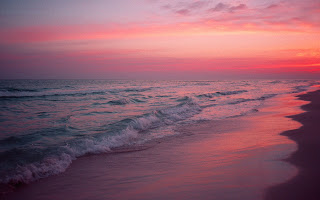A good friend asked for a painting of her as a Sagittarius - her astrological sign. I thought it was a good occasion to try out a method of working with oils that I am convinced was used by Frazetta (more in a later post)...that or something similar. His work is characterized by very thinly applied paint in the background, with very smooth, "smoky" color transition, that remind of watercolor. I am convinced that he did his backgrounds in one passage, without buildup of paint and mixing the color on the untoned canvas....his toning was his background, so to say.
The topic of woman and horse reminded me anyhow of a Frazetta painting - this one:
from which I brutally imitated the waves and rock in the background - a good occasion to try out a putative Frazetta technique by copying a little part of one of his paintings.
The whole thing started out as thumbnails, as usual, which then crystallized into a drawing and digital value study.
This time I did the color studies in Photoshop - mainly using color balance layers - not the cleanest of methods but a very fast one. I did 8 color variations, from which my friend choose the last one....but “a little more like the sunset photo”, which I also showed her as one of the possible color schemes.
Here is a lineup of the references I used: one of the nebulas in the Sagittarius constellation, horse and archery photos, sunsets by the seaside and of course the Frazetta painting above and a portrait photo of the model.
The palette I used on this one was yellow ochre, cadmium scarlet, alizarin, burnt umber, ultramarine blue, cerulean blue and both titanium and zinc white. My first pass on the canvas was the background. According to my take on Frazetta, I just mixed a variety of thinly diluted oils directly on the canvas, rubbing and mixing the colors with a cloth to achieve a watercolor-wash effect. I was very happy with the result, which already established the color scheme:
My second pass was refining the waves and the rock and darkening some of the cloud with dry-brush scumbling.
I then painted the figure, section by section, from top to bottom.
The end result is a true mixed traditional-digital piece:
The lower part of the canvas remained practically as it was after the very first “toning” pass. I loved this technique, which I think combines some of the working process of watercolors with the perfect control of oils - I think I will use it often.

















